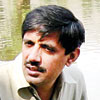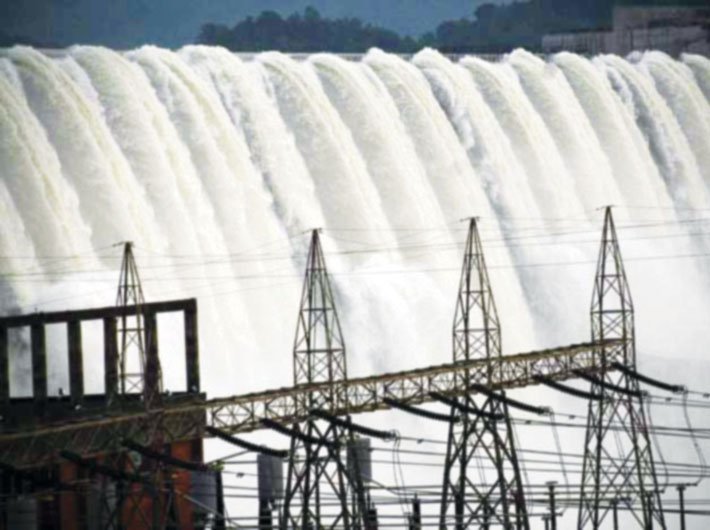A political decision that ignores legal mandates and human rights – and for some negligible benefits
Gujarat was allocated 9 million acre feet (MAF) of water from the Sardar Sarovar dam under the Narmada water dispute tribunal award. The state plans to use that water through the main canal. The level of the main canal is 110 metres. The moment the water in the dam is above that level, it will enter the canal and after that Gujarat can make use of it.
Gujarat already has more than 9 MAF water available annually even at the current height of 121.82 metres. (In addition, it gets 0.5 MAF from Rajasthan, which is also to be supplied by the same canal.) Now the question is how much of it Gujarat is using. The state says its total projected command area is 18.5 lakh hectares, of which it is able to irrigate around 3.7 lakh hectares (20 percent). If Gujarat already gets all the water at the current height but is able to use only 20 percent of it, why does it want to raise the dam height? Three issues are related to the proposed increase in the dam height.
Gujarat is not going to get additional quantity of water unless there is surplus water. The tribunal assumed that the Narmada has 28 MAF water and divided it among four states: 9 MAF for Gujarat, 0.5 MAF for Rajasthan, 0.25 MAF for Maharashtra and 18.25 MAF for Madhya Pradesh. If there is more than 28 MAF water in a year, Gujarat can take more.
The first issue is the development of the canal network in the state. The reason Gujarat is not able to use additional water is because it has not developed the whole canal network, including branch canals, the distributaries, minors, sub-minor canals and field channels. The Narmada Bachao Andolan (NBA) was not stopping them from building the canal network. Why did they not develop the canal network all these years and use the water already available? This is a question the Gujarat government needs to answer.
Thus, media reports saying that the increase in the dam height will allow Gujarat to take the water to Kutch and Saurashtra are absolutely untrue. At the current height, the state can take all the water it wants to Kutch, Saurashtra and north Gujarat. The only additional benefit from the increased height is more storage. They cannot store the water currently as they do not have the permission. Sections of media have not yet understood that the latest permission (of height raise) is not for filling the water up to the full height, but only for installing the gates.
The second issue is rehabilitation. According to the tribunal and the supreme court’s orders, rehabilitation of the people to be affected at the next stage of height increase has to be completed six months ahead of submergence. Madhya Pradesh has not completed rehabilitation yet. Two hectares of land is supposed to be provided to each displaced family and a person above 18 years is to be considered a separate family.
Madhya Pradesh has been saying that it does not have land – and this is in violation of the tribunal’s order. NBA estimates that the latest increase in height will affect 2.5 lakh people, most of them in Madhya Pradesh but some in Gujarat and Maharashtra. NBA’s factsheet also shows that some families in Gujarat and Maharashtra are yet to be rehabilitated. Without rehabilitation, how did the Narmada Control Authority (NCA) allow the height increase?
The third issue is that there is a legally binding decision-making process which has also been part of the supreme court order of October 2000. It says that every stage of additional increase in the dam height has to be sanctioned by the environment and rehabilitation sub-groups of the NCA, and the NCA itself. The environment sub-group is chaired by the ministry of environment and forests secretary with representatives from the four states and the NCA. The rehabilitation sub-group is chaired by the ministry of social justice secretary, again with representation from the four states and NCA. The NCA is chaired by the water resources secretary and includes secretaries from the ministries of environment and social justice, the chief secretaries of the four states and a number of others. This is a legally mandated mechanism.
But till 15 days back this mechanism had not given clearance. Why is it that within 15 days of Narendra Modi coming to power, all these officials, agencies, ministries, ministers, secretaries and all the state governments have fallen in line and given their clearance? This mechanism is not supposed to go by the political orders of the prime minister. It is supposed to go by the merit of the situation. The height increase seems like a political decision. Such political decisions cannot have legal sanctions in this case. Modi was the chief minister of Gujarat for the last 13 years. During his tenure as CM he had been advocating the height increase. As soon as he became PM he wanted to push through this matter. He held a meeting with the Gujarat chief minister and all the ministries, and this information was not in public domain till recently. The NCA meeting was scheduled for June 12.
Is there anything from the government in public domain after that? Not even a word till now, as on June 20. How does this government function? There is absolutely no transparency on such a major decision. Nor any participatory process involving affected people and NBA. How was the decision taken and on what basis? Where are the minutes and the agenda of the meeting? All of this should have been in public domain and agenda should be out a month in advance. Why this secrecy?
Since Gujarat has been unable to make full use of the available water, why was it pushing for the increase in height? One additional benefit besides storage is power generation. My estimate is that it would not be more than 10-20 percent more than what the Sardar Sarovar Project (SSP) is already generating. Sardar Sarovar generated 5.88 billion units of power last year. It is not going to be able to generate more than that: maybe 10-20 percent extra but even that may not be realised. The project has two powerhouses: a riverbed power house of 1,200 MW and a canal head power house of 250 MW. When power is generated through the riverbed power house, water has to be released in the Narmada. Then it is not available for the main canal use. Only when you release water into the canal, through canal head power house, you can use it for irrigation.
The tribunal had mandated various quantities of power generation at different phases of the project development. At the final stage, when Gujarat is able to make the maximum use of water through canals, there will be very little water available for the riverbed power house. By that stage Madhya Pradesh would have also developed all of its irrigation potential. Once Madhya Pradesh develops its entire infrastructure for water use and Gujarat is able to use all the water for irrigation, there will be very little water available for the riverbed power house. So power generation is expected to gradually go down. The installation of the gates is likely to take around 30 months. By the time they have the permission from the various sub-groups and NCA for closing the gates and storing water, there will be a reduction in power generation. Power generation from the riverbed power house may not go up even when the storage is complete.
The politics behind the decision is that Modi wants to show that he can complete the project. The Narmada issue has always been a lifeline for Gujarat politicians. All chief ministers and political leaders of that state in the last three decades advanced their own careers by trying to show that they were pushing the Narmada project. Modi is also trying to project the image that he means business. His track record as chief minister shows he is very corporate-friendly. His economic model is friendly with the rich and middle class. He honestly believes that this is the best economic model to follow: push development projects at any cost and the trickle-down effect will take care of the poor. This model is fundamentally flawed in a country like India.
Given a choice, most tribals would not like to leave their habitat and community and live with the natural resources they have. If we are interested in helping them, we need to ensure that they have access to basic facilities like education, healthcare and transport, and that they get good prices for their produce. As a society, we should equip the tribals to understand our system and deal with it in an equal way. As part of NBA, we have been saying that if you want to rehabilitate them you have to rehabilitate them as a community. The level of livelihood of the displaced people should improve, not reduce. Otherwise it is not a development project.
In case of SSP, there is no justification in increasing the height of the dam from any angle. It would be in the best national interest for the government to suspend and review that decision and even the need for such height increase at any stage.
(This was first published in July 1-15, 2014 issue of Governance Now.)

